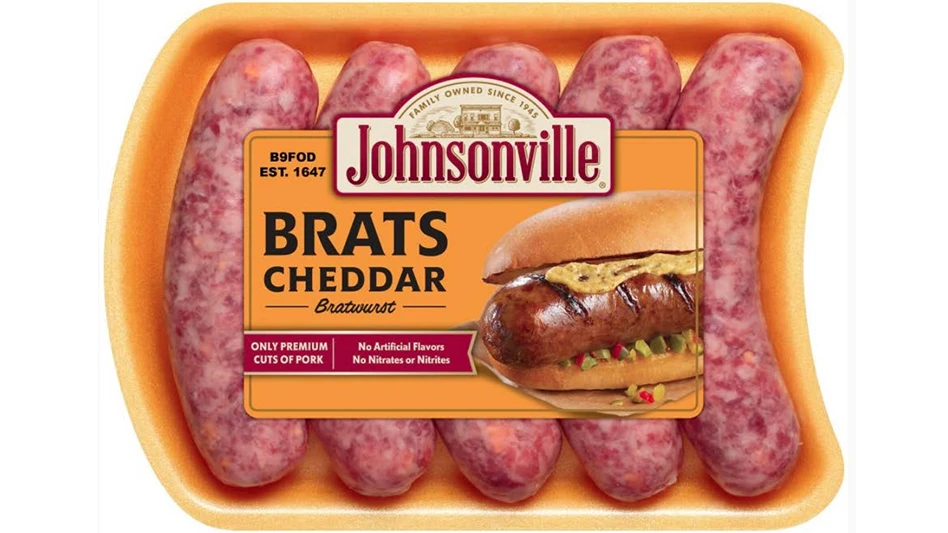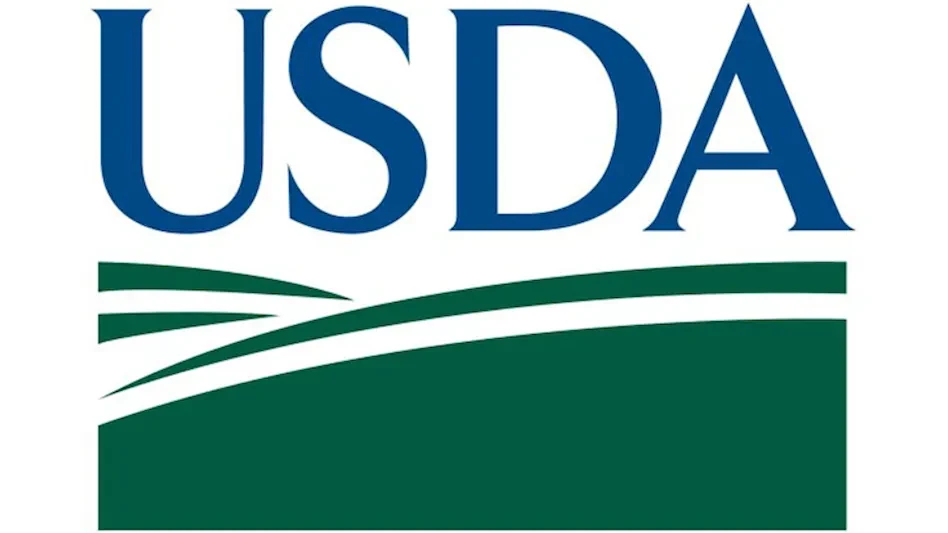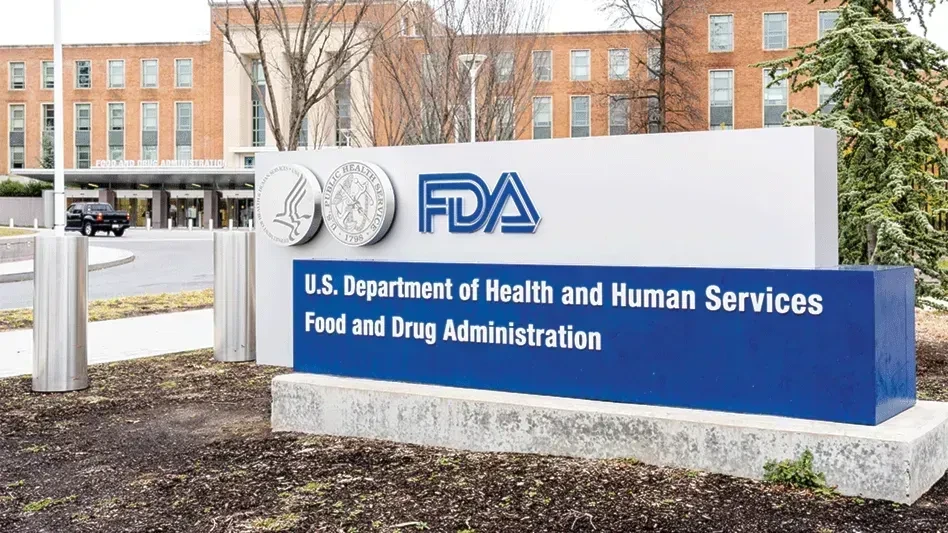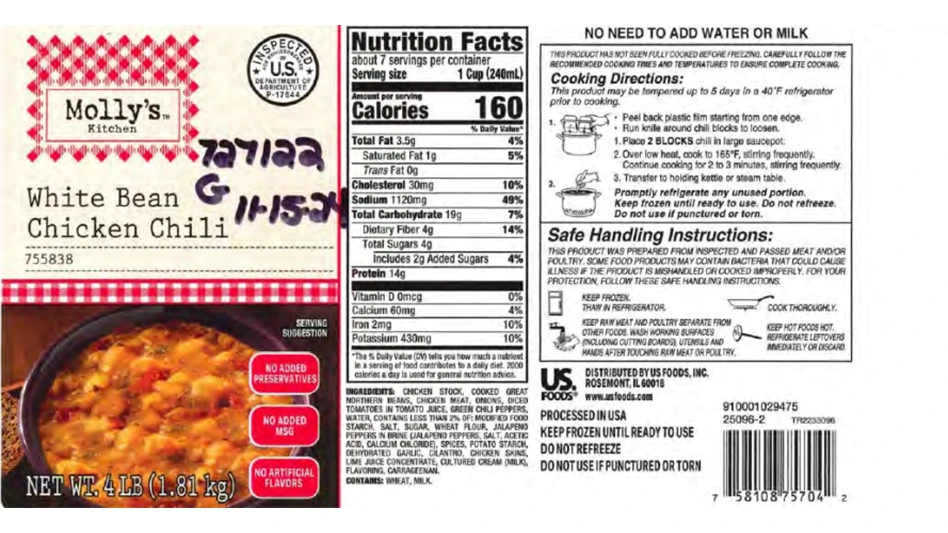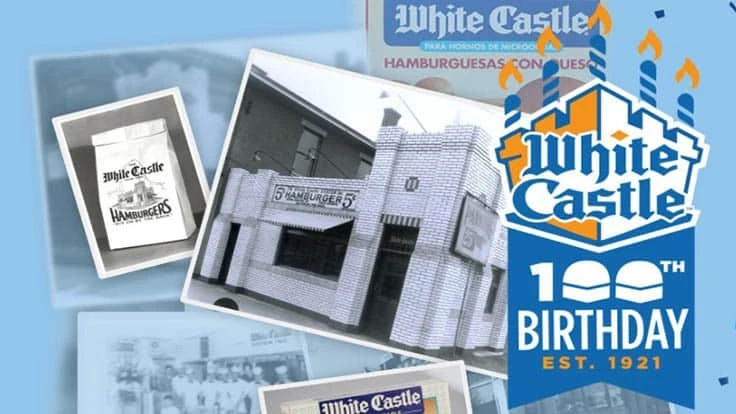
 How does a regional fast food burger chain known for its late-night imbibers become a national retail sensation, Time magazine’s “Most Influential Burger of All Time,” and the number one seller of frozen product of its kind?
How does a regional fast food burger chain known for its late-night imbibers become a national retail sensation, Time magazine’s “Most Influential Burger of All Time,” and the number one seller of frozen product of its kind?
By knowing its customer and focusing on consistent quality for nearly 100 years; setting up its production facility to duplicate the cooking process of the restaurant; and producing frozen retail burgers that are nearly exact replicas of the restaurant fare ... sans pickle. (Read on to discover the story of the pickle.)
White Castle restaurants are located in only 12 states in the Midwest and Eastern U.S., yet its frozen retail sliders sell just as well across the Western states. You have to give some of the credit to Harold and Kumar, but based on the more than 9,000 applications to join the “Cravers Hall of Fame,” those iconic sliders warrant a lot of the credit on their own.
White Castle was founded in 1921 in Wichita, Kan., and is considered to be the first hamburger chain in the U.S. In 1950, some of its restaurants began selling frozen burgers, then the frozen products went retail in 1986, produced in Louisville, Ky. Today, the company has three slider manufacturing plants, including Covington, Ky., and its newest facility in Vandalia, Ohio, which began production in 2014. It was Vandalia’s LEED Gold Certified plant that QA visited to discover the secret behind the national craving for White Castle sliders.
East to West.
The Vandalia plant produces a single product, the White Castle slider—albeit in three versions: plain, cheese, and jalapeno cheese—using a total of five ingredients. Despite this apparent simplicity, the company’s food safety and quality controls rival those of any multi-ingredient, multi-product production plant.
The most critical aspects of safety are temperature maintenance and the separation of raw and cooked product, with quality being its ingredients and consistency of product. The same beef is used for the restaurants and the frozen-slider production facilities, and, said Quality Assurance Manager Whitney Baker, “We measure the onions and seasoning the same as the restaurant, so every burger tastes the same as that from any other plant ... and we duplicate the cooking process of the Castle.”
The Vandalia plant was designed for one-way flow of product and separation of function. Each of the frozen slider’s five ingredients—bun, beef, onions, cheese, and seasoning—comes into the plant from the east into its own dedicated storage room; moves from separated raw to cooked areas; then departs the plant as finished product at the west, with product and/or packaging inspected each step of the way.
Producing the Slider.
As any “Craver” will tell you, the permeation of the onions throughout the product is an essential and differentiating characteristic of the White Castle slider. As such, Baker said, “It all starts with the onions.”...
 1. The onions.
1. The onions.
The pre-sliced and diced onions arrive at the plant in a dehydrated form, so they spend their first 20 to 30 minutes from storage in a spinning hydrator. The hydrator is located in a separate room designed to withstand the acidity of the onions and keep the smell from permeating the entire plant. The rehydrated onions are placed into a hopper and transferred to the production line. Here, contrary to standard sandwich-making that begins with the bread, the secret to the slider’s unique flavor is the steaming of the onions as the foundation of the sandwich. The onions are dispensed into consistent lines on the grill surface so each slider will have 4.0 to 5.0 grams of onion—just like those at the restaurant.
2. The burger.
Next, the USDA-inspected, 100% beef, no additive or filler, five-hole square beef patties are placed directly on top of the steaming onions. “We’re one of the few that use 100% beef; that’s why we started calling it out on the packaging,” Baker said. The burger comes into the plant in approximately five-pound, 2.5-inch square logs from White Castle meat plants at which trimmings are ground and extruded into White Castle’s iconic five-hole burgers. This attribute was developed for the restaurant in 1949, enabling the burgers to cook through without being flipped; the steam from the onions rises through the meat patties, cooking them to a safe temperature, while infusing the flavoring throughout.
The same process is used in the frozen-slider production: the burger logs, which are first thawed in a 27-28°F storage area for 24 hours, are loaded into a slicing machine. Each log is sliced into ¼-inch thick square patties, which are dropped flat onto the onions to steam together throughout the cooking process.
 3. The seasoning.
3. The seasoning.
Adding to the flavor of the slider, a mix of salt, pepper, and other seasonings are lightly sprinkled on top of the burgers as they travel down the 215°F grill line.
Instead of controlling the ambient temperature of the room, the production facility controls the temperature of the ingredients, with the meat and bun temperatures being CCPs. This provides for food safety while also focusing on employee comfort and welfare in the plant.
4. The bun.
White Castle has its own bakeries at which it bakes its slider buns; the buns come into the plant whole. In an area separated from production by a clear plastic curtain, the buns are sliced and the bottom and top halves undergo separate journeys—with the bottom half flowing through an opening in the curtain to meet up with the burgers and the top half flowing on down to the end of the line. While keeping the buns separated from the raw ingredients, the clear curtain also enables workers to see across the production areas to ensure the buns and burgers are properly meeting up. (See curtain in photo 6. Topping it off, below.)
Before the burgers are cooked through, the bun bottoms are placed on top of the burgers, again gaining flavor from the steaming onions and burger patties. As they flow down the line, team members inspect the product while straightening any misaligned buns. It is only at this point that rows of the half-compiled slider are machine-flipped, enabling the rest of the process to be completed.
5. The cheese.
If the burgers are to remain plain, the cheese machine is not enabled and the burgers continue on to be topped off. If the day’s run is that of cheeseburgers or jalapeno cheeseburgers, a log of cheese, similar to that of the beef, is loaded into a slicing machine, and square cheese slices are dropped onto each patty. At this point the burger is fully cooked; the cheese is placed post-cooking.
As with the onions, burgers, and seasoning, the cheese logs and slices are measured to exact specifications to ensure all are the same across all facilities. (While the beef and cheese come into the manufacturing facilities in logs, the restaurants receive pre-sliced product instead.)
 6. Topping it off.
6. Topping it off.
With the slider fully cooked, all that is needed to finish it off is the top bun. It and the cheese are the only parts of the slider that are not steamed. Once topped, the completed sliders are run along a conveyor at ambient temperature, enabling them to cool slightly for packaging.
7. The packaging.
Whether the sliders are to be sold as a club pack or retail pack; whether they have cheese or not—every slider is first packaged as a microwaveable, plastic-wrapped two-pack.
Once packaged, the two-packs are inspected, then they flow through a spiral freezer which cools the burgers from 30°F down to 0°F.
After that, they take a trip down the spiral slide (see photo on page 20), and through a metal detector (another CCP) to be packaged into their blue plain burger or orange cheeseburger cardboard box and placed into a -10°F freezer.
From start to freezer wall, the process takes 18 minutes. With a maximum allowance of 30 minutes, the extra time allows for repackaging of any sliders that did not meet inspection criteria, with close documentation of every tray of burgers to ensure none exceed the maximum time.
And, we can’t forget ...
The pickle.
If you purchase a slider at a White Castle restaurant, it will include a pickle slice. In keeping with the company’s drive to exactly imitate restaurant quality in its frozen product, the original frozen sliders included the pickle. But it was soon discovered that pickles don’t freeze well, because the water evaporates, then, when the burger is microwaved, the pickle becomes tough and practically inedible. So, White Castle conducted a pickle study. Finding no solution for maintaining quality of a frozen pickle, it was deep-sixed, and a note included on the label for consumers to add a pickle, if desired.
Constructed for Food Safety and Defense.
Alongside the east to west production area of the Vandalia plant is a corridor which spans the length of the building and acts as a divider between production and ancillary departments, including the office of the USDA inspector, whose watch White Castle voluntarily undergoes. (All its beef is USDA inspected at the meat plant, but USDA presence is not required at the slider production facility.) Along the walls on each side of the corridor are windows (including that of the USDA office), enabling viewing of production from outside the restricted areas.

For food defense, the facility has a completely separate, locked area for deliveries, enabling drivers to check in without going into the plant.
Currently the 102 team members of the Vandalia plant produce 65 million sliders a year on its single line. With its 2016 expansion plans to add a second line, the plant expects to double its production as well.
Continuing its focus on syncing of the restaurant and frozen sliders, White Castle uses the same vendors for its restaurants, it bakeries, its meat-grinding, and its production facilities. With all its beef and most of its buns coming in from White Castle facilities, the company has developed a methodical traceability program by which it can trace back any ingredient to its origin within five minutes.
Additionally, all Vandalia’s QA team members, as well as the plant manager, are HACCP certified, and the plant has regular food safety training for all employees, occurring at least monthly. Such a comprehensive program is particularly critical because the team members are crossed-trained in different areas of production and rotate stations every 20 minutes.
The Colors of Food Safety.
Colors are critical to White Castle’s food safety program, with each color having a very specific meaning and designation:
- Green: the color of plastic in which the beef logs are wrapped.
- Yellow: the color of plastic in which the buns are wrapped.
- White: the color of hairnets and lab coats worn on the raw side.
- Blue: the color of hairnets and lab coats on the cooked side.
.jpg)
Harold and Kumar.
 With all this, what credit is left for Harold and Kumar (and, for the uninitiated ... Who the heck are they?). In 2004, the movie Harold and Kumar Go to White Castle was released. Its plot, as described by IMDB: “An Asian-American office worker and his Indian stoner friend embark on a quest to satisfy their desire for White Castle burgers.”
With all this, what credit is left for Harold and Kumar (and, for the uninitiated ... Who the heck are they?). In 2004, the movie Harold and Kumar Go to White Castle was released. Its plot, as described by IMDB: “An Asian-American office worker and his Indian stoner friend embark on a quest to satisfy their desire for White Castle burgers.”
When the film’s producers approached White Castle for approval to use its name and restaurant, White Castle CEO Bill Ingram asked, “Does it make fun of our team members?” He was told no, but that the movie does include sex, drugs, and rock ’n roll. His response: “That’s okay, as long as it doesn’t make fun of our team members.” And approval was given for the filming.
The movie was positively received by critics; grossed $5.5 million its opening week with a worldwide total gross of $24 million; and has become a cult classic—adding to White Castle’s “Crave Nation” in a way that paid marketing would unlikely ever be able to do.
In fact, when a White Castle restaurant opened on the Vegas Strip in January, there was not only a four-hour wait to get in, but the restaurant had to temporarily close after 24 hours because demand exceeded capability and supply.
Is it any wonder that Nielsen cited the White Castle cheeseburger as the No. 1 selling frozen sandwich in retail and vending in the U.S.?
For Good Eating ...
... Once you get the frozen sliders home, place them in the refrigerator (for up to 10 days) instead of the freezer. The sliders thaw more slowly enabling them to “slack out.” Then microwave the burgers for only 30 seconds instead of 60.
... Over the years, White Castle hamburgers have been used in a number of consumer recipes, the most common of which is poultry stuffing. (Just be sure you use the hamburgers not the cheeseburgers, and remove the pickle if you get the burgers from the restaurant). From these, and their own concoctions, the company developed a cookbook, “By the Sackful.”
... If you don’t have a White Castle restaurant near you, but are craving the taste of a fresh slider, keep an eye out for the Crave Mobile, White Castle’s food truck that makes an annual cross-country tour.
The author is Editor of QA magazine. She can be reached at llupo@gie.net.
Photos by Vicki Jeromos-Blayney
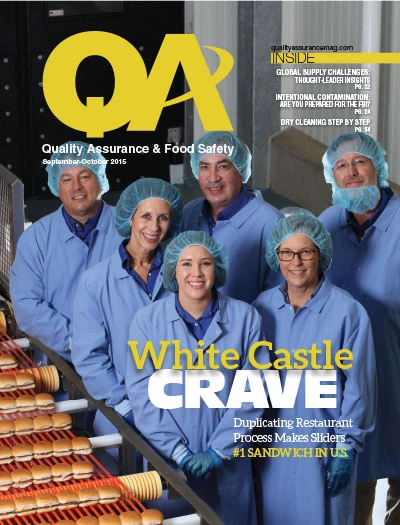
Explore the October 2015 Issue
Check out more from this issue and find your next story to read.
Latest from Quality Assurance & Food Safety
- Taylor Farms Linked to Romaine E. coli Outbreak as Marler Clark Files Multiple Lawsuits Against Supplier
- IAFNS Announces Winners of Emerging Leader Awards for Food Safety, Nutrition
- FDA Shares Testing Results for PFAS in Bottled Water
- Provision Analytics Adds Food Safety Expert Jennifer Williams to Strategic Advisory Group
- Boston Sword & Tuna Protects Seafood Safety with Mettler-Toledo Metal Detectors
- IFT Releases New Resources to Aid Food and Beverage Industry in Sugar Reduction
- Yum! Brands CEO David Gibbs to Retire in 2026
- Penn State Extension Offers Short Course on Food Microbiology and Safety for Food Plant Workers
